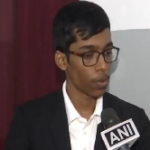As bulldozer action continues in Assam, the Supreme Court of India issued a contempt notice to the state government after 47 residents filed a petition against the state government alleging violations of the top court’s order that halted bulldozer action till October 1. The residents of the Sonapur area had moved the Supreme Court on September 28 alleging willful violation of the top court’s interim order.
Supreme Court directed the state to maintain the status quo on the Sonapur demolitions drive and issued notice to authorities concerned to contempt petition alleging wilful violation of the court’s interim order dated September 17, directing that no demolition should take place across the country without prior permission.
A bench comprising Justices BR Gavai and KV Viswanathan instructed the state to submit a response within three weeks and ordered that the status quo be maintained until the next hearing.
The petitioners claimed that, contrary to the authorities’ claims that they are illegal occupiers of tribal land, they have been allowed to reside there by the original landowners, many of whom belong to protected classes.
During a hearing earlier this month, the Supreme Court ruled that no demolition activities should proceed in the country without its consent. Pausing ‘bulldozer justice’ until October 1, the court stressed that even a single instance of unlawful demolition goes against the spirit of the Constitution.
The Supreme Court was reviewing a series of petitions claiming that properties belonging to individuals accused of crimes were being demolished in several states. During the previous hearing, Solicitor General Tushar Mehta informed the court that a ‘narrative’ was being constructed around the demolition of these properties. Mehta added that the petitioners have alleged the demolitions are targeting a specific religious community. He noted, however, that in Madhya Pradesh, 70 shops were demolished after proper legal procedures were followed. “More than 50 belonged to Hindus. What are they saying ‘mohalla’ etc… is narrative building!” he had said.



